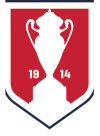Fall River’s Fabulous Three-City Open Cup Three-peat
Charles Cuttone takes us back to when the Massachusetts-based Fall River Marksmen changed names and home cities three times and didn’t miss a beat – winning three-straight U.S. Open Cup titles between 1930 and 1932.
















